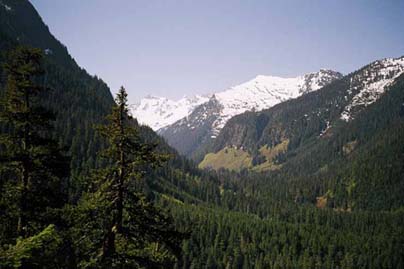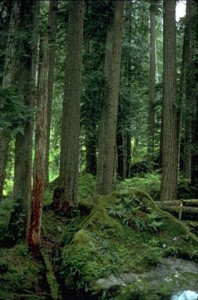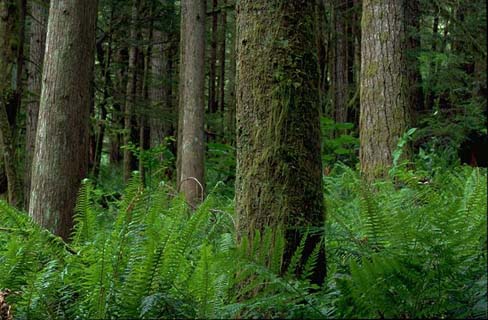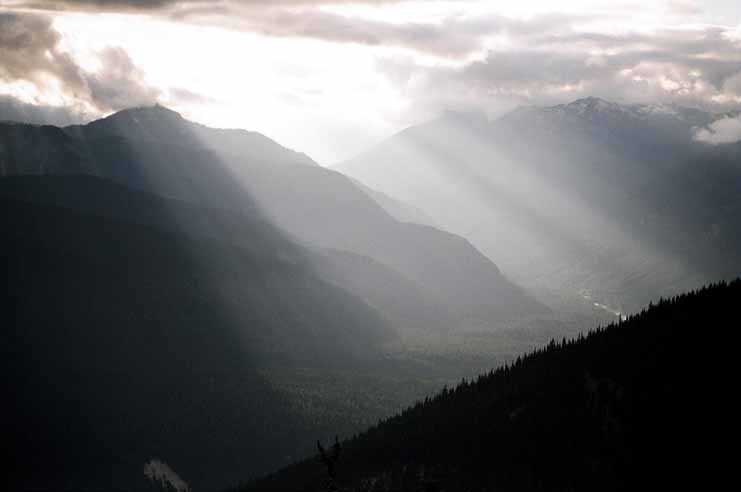
The Wilderness Act of 1964 defines the areas to protect simply: “A wilderness, in contrast with those areas where man and his own works dominate the landscape, is hereby recognized as an area where the earth and its community of life are untrammeled by man, where man himself is a visitor who does not remain.”
Wilderness has been called the “hard green line.” Congressionally designated Wilderness is the highest level of protection available for public lands in the United States, and the most durable. All forms of resource extraction, notably logging, mining, and drilling are not allowed. Other than very limited exceptions for public safety, motorized or mechanized devices are not permitted in Wilderness areas, including ORVs, ATVs, snowmobiles, and mountain bikes. Pack animals are permitted, and trails can be built, but not with power equipment. Hunting, fishing, hiking, climbing, and all non-mechanized recreational activities are allowed. Wilderness keeps things the way they are more effectively than any other land designation.
Wilderness areas are not easy to establish. Most take years, sometimes many years, of patient work. Both houses of Congress must pass legislation designating Wilderness in the form of a bill, and the President must be willing to sign it into law. There are many hurdles to overcome in what is always a difficult process. But one of the greatest beauties of Wilderness is that once enacted, it is very difficult to un-do—the protection for the ecosystem of a designated landscape is as permanent as the United States is as a country. There are very few cases where land has been removed from congressionally designated Wilderness. It is the gold standard of land protection in the United States.
A Brief History of Wilderness & Park Advocacy
in the North Cascades

Since 1957, NCCC’s top priority has been has been to protect public lands in the North Cascades by establishing the North Cascades National Park and adjacent Wilderness Areas. Thanks in large part to NCCC’s unremitting efforts over half a century, the map of the North Cascades looks far different now than it did in 1957 at NCCC’s founding, with vastly more areas protected by federal law.
Prior to passage of the Wilderness Act in 1964, there were a small number of administratively designated areas on National Forest lands, some of which were called “Wilderness”, along with others called “Backcountry” or “Primitive areas”.
Some of these were the legacy of the progressive 1930′s Forest Service of Bob Marshall. However, what the Forest Service could designate, it could also un-designate. Timber interests captured the Forest Service in decades after WWII. There were many cases where lands in such protected areas were suddenly open to resource extraction and effectively unprotected at the stroke of a pen when the Forest Service decided to “develop” them. Faced with this intolerable situation, conservationists worked for years to pass the Wilderness Act.
The Forest Service (Department of Agriculture) of the 1960′s focused exclusively on logging, placing resource extraction above all other missions, so NCCC decided to pursue National Park (Department of Interior) designation for as much of the North Cascades as possible. In 1968, NCCC’s efforts paid off with the designation of the North Cascades National Park, the Ross Lake and Lake Chelan National Recreation Areas (NRAs, essentially National Parks where hunting is allowed), and the Pasayten Wilderness Area. The existing Glacier Peak Wilderness Area was also expanded at this time. Most of the North Cascades National Park and NRAs were later protected as Wilderness in the form of the Stephan Mather Wilderness.
In the years following 1968, NCCC played a supporting role in establishing the Alpine Lakes Wilderness Area (1976) and a leading role in passing the Washington Wilderness Act (1984). The 1984 Act protected many high-priority places for NCCC, including the Mt. Baker, Noisy – Diobsud, Lake Chelan – Sawtooth, Boulder River, and Glacier Peak additions; and Henry Jackson, Clearwater, Norse Peak, and William O. Douglas Wilderness Areas. Over one million acres of land were protected by the 1984 Act. NCCC’s particular focus was on the Mt. Baker and Boulder River areas.
Conservation efforts shifted to different arenas after 1984, but the 21st century has seen renewed efforts to create Wilderness areas in Washington State. NCCC was a leader in the effort to designate the Wild Sky Wilderness northeast of Seattle, culminating in the passage of the Wild Sky bill in May 2008. The Wild Sky bill, sponsored by Senator Patty Murray and Congressman Rick Larsen (2nd Congressional District before district lines were re-drawn in 2012) designated about 106,000 acres of land as Wilderness in the North Fork Skykomish and Beckler watersheds north of Highway 2, in the Stevens Pass area.
The Wild Sky Bill is a marked departure from the politics of the past which limited most Wilderness areas to higher elevations. It includes extensive lowland forests, as well as many miles of salmon streams, something almost totally absent from most existing protected areas in the North Cascades.

The upshot is that the areas protected as a part of Wild Sky are ecologically rich and biologically diverse. NCCC board members devoted countless hours and played large roles in determining boundaries that take in about 60,000 acres of high elevation old growth forests (above 3,000 feet) and about 14,000 acres of rare low elevation old growth (below 3,000 feet).
Perhaps most remarkably, the Wild Sky Bill also protects more than 6,000 acres of mature, naturally regenerated second-growth forest. These second-growth forests grow on the most productive, lowest elevation sites on the Mt. Baker Snoqualmie National Forest. Railroad logged in the early twentieth century; they were never replanted and have grown back naturally with a mix of native species. Many trees now reach 150 feet or taller and are three feet or more in diameter. They are well on their way to becoming old growth.
Wilderness Advocacy Today
The wild and beautiful landscapes of the North Cascades National Park and adjacent Wilderness Areas are now taken for granted by Washington State residents and visitors from around the world. However, ecologically important, biologically diverse lowland forests and wildlife habitats remain outside the Park and Wilderness boundaries. NCCC and other conservation groups recognize the importance of these lowland forests for watershed protection and the survival of many North Cascades species. Much work remains to be done to expand Wilderness in the North Cascades.
Fortunately, there is now a groundswell of environmental awareness sweeping the country. The time is ripe for organized action to expand the Wilderness Areas in the North Cascades. The Wild Sky Wilderness added more than 100,000 acres to Washington’s magnificent Wilderness areas. Other lowland areas are perfect for future Wilderness designation.

Local volunteer grassroots groups working closely with the North Cascades Conservation Council are currently developing proposals for additions to North Cascades Wilderness Areas. These grassroots volunteer groups include Mount Baker Wild (MBW), the Friends of Seven Rivers (7 Rivers), and the Alpine Lakes Protection Society (ALPS). Other regional and national conservation groups are joining the effort.
It is imperative that NCCC, its grassroots conservation partners, and other conservation groups be in a position to take advantage of the groundswell of public awareness and support for environmental protection. To that end, NCCC is actively working on National Park and Wilderness additions. The American Alps Legacy Project is currently underway, and we are working with partners across the conservation community to realize a vision of North Cascades National Park with boundaries that are based on watersheds and ecosystems as opposed to the current state of somewhat random lines on a map.
Current Issues and Activities
- Gathering and analyzing information from all available sources to fully delineate the Wilderness characteristics of public lands in the North Cascades.
- Ground-truthing to confirm database information and to gather additional information on the current status of roads, trails, mines, recreation, and land use in the Wilderness study areas.
- Developing GIS-based maps showing proposed Wilderness addition boundaries, as well landscape characteristics and land use patterns in the study areas.
- Developing detailed Wilderness addition proposals for the Mt. Baker, 7 Rivers, and Alpine Lakes areas, including in-depth analyses of Wilderness characteristics and potential non-compatible uses.
- Planning a Wilderness outreach campaign that will contact agency and tribal representatives, recreation groups, the media, local elected officials, and other community leaders.
What You Can Do to Help
- Volunteer to ground truth possible Wilderness lands in the area by going out to the proposed locations and see what they look like and if the boundaries make sense.
- Volunteer to assist with outreach activities (including wilderness tours, visits with community leaders, education materials development, and others).
- Join NCCC and help us work towards more Wilderness Protection.
